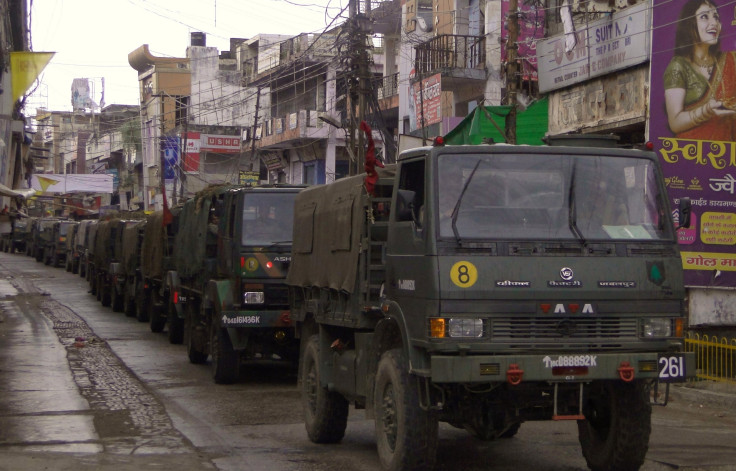Muzaffarnagar Communal Riots: Tension Prevails After India Deploys Army; Shoot At Sight Orders In Place After 31 Killed In Clashes

After 31 people were killed in communal clashes over the weekend between Hindus and Muslims in six villages in Muzaffarnagar district in the northern Indian state of Uttar Pradesh, or UP, prompting the government to deploy hundreds of army soldiers in the region, orders to shoot rioters on sight have been issued, and politicians, who were accused of inciting violence, have been barred from entering the district, as authorities try to maintain law and order.
A state of high alert has been declared in the state, which is India's most populous state with a population of 200 million, and riot-hit villages remain under curfew, even as officials said the death toll could climb further. About 200 people were arrested and cases were filed against about 1,000, including four state lawmakers belonging to the Hindu nationalist Bharatiya Janata Party, or BJP, and a former member of parliament belonging to the Congress party.
Tensions have been simmering since three people were killed in a village in Muzaffarnagar district on Aug. 27, after they protested against the alleged harassment of a woman, Indian media reported.
Later, a fake video was circulated depicting two men being lynched by a mob, sparking riots that spread across several villages in the district. The Indian army was brought in after armed Hindu men stormed a mosque and a predominantly Muslim village. Soldiers have launched a door-to-door search for weapons, and shops and schools remained shut, media reports said.
Prime Minister Manmohan Singh is in touch with Akhilesh Yadav, the chief minister of Uttar Pradesh and a leader of the Samajwadi Party, to assure the central government’s assistance in restoring peace, Press Trust of India reported.
Communal riots have been recurring for years in UP, which has a sizable Muslim minority population, escalating after a Hindu mob demolished the historical Babri Mosque in the Hindu holy city of Ayodhya in 1992. The nationwide violence that erupted immediately after the demolition killed more than 2,000 people.
“We are likely to see more communal clashes as the 2014 elections come near,” Home Minister Sushil Kumar Shinde told reporters on Friday.
India has witnessed a rise in communal violence this year, with 451 incidents reported so far, compared to 410 in all of 2012, according to a government review.
“Besides lax policing, the general awareness in rural hinterlands of India is lower than it is in cities and towns, and therefore it is easier to incite people,” a senior official associated with the review, told NDTV, a local television station.
“So far communal clashes were associated with cities and towns and would occasionally spread inward into rural areas, but that trend appears to be reversing,” the official added.
© Copyright IBTimes 2025. All rights reserved.





















